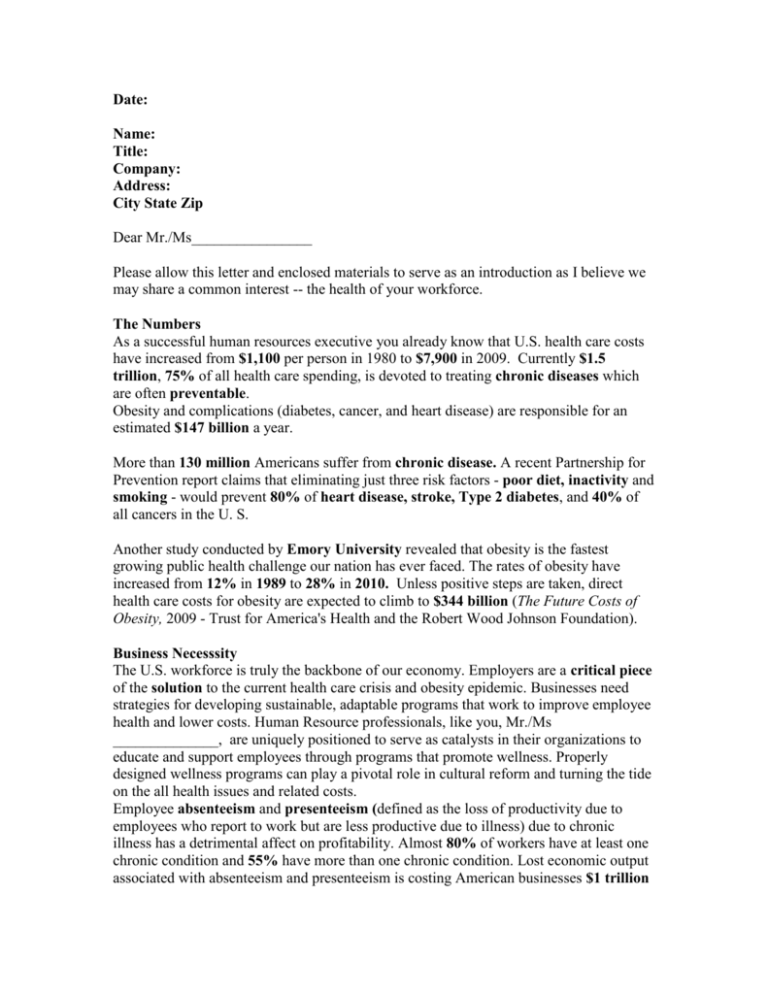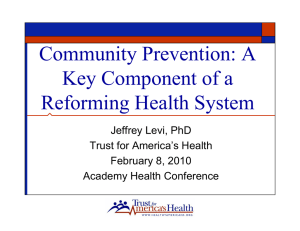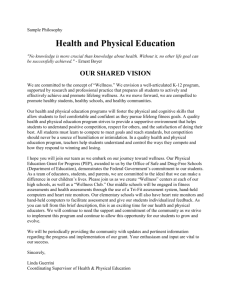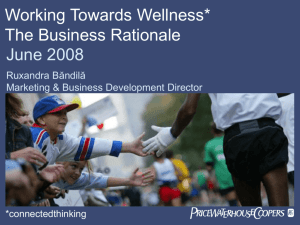exact letter for you to
advertisement

Date: Name: Title: Company: Address: City State Zip Dear Mr./Ms________________ Please allow this letter and enclosed materials to serve as an introduction as I believe we may share a common interest -- the health of your workforce. The Numbers As a successful human resources executive you already know that U.S. health care costs have increased from $1,100 per person in 1980 to $7,900 in 2009. Currently $1.5 trillion, 75% of all health care spending, is devoted to treating chronic diseases which are often preventable. Obesity and complications (diabetes, cancer, and heart disease) are responsible for an estimated $147 billion a year. More than 130 million Americans suffer from chronic disease. A recent Partnership for Prevention report claims that eliminating just three risk factors - poor diet, inactivity and smoking - would prevent 80% of heart disease, stroke, Type 2 diabetes, and 40% of all cancers in the U. S. Another study conducted by Emory University revealed that obesity is the fastest growing public health challenge our nation has ever faced. The rates of obesity have increased from 12% in 1989 to 28% in 2010. Unless positive steps are taken, direct health care costs for obesity are expected to climb to $344 billion (The Future Costs of Obesity, 2009 - Trust for America's Health and the Robert Wood Johnson Foundation). Business Necesssity The U.S. workforce is truly the backbone of our economy. Employers are a critical piece of the solution to the current health care crisis and obesity epidemic. Businesses need strategies for developing sustainable, adaptable programs that work to improve employee health and lower costs. Human Resource professionals, like you, Mr./Ms ______________, are uniquely positioned to serve as catalysts in their organizations to educate and support employees through programs that promote wellness. Properly designed wellness programs can play a pivotal role in cultural reform and turning the tide on the all health issues and related costs. Employee absenteeism and presenteeism (defined as the loss of productivity due to employees who report to work but are less productive due to illness) due to chronic illness has a detrimental affect on profitability. Almost 80% of workers have at least one chronic condition and 55% have more than one chronic condition. Lost economic output associated with absenteeism and presenteeism is costing American businesses $1 trillion a year (U.S. Workplace Wellness Alliance, 2009). Wellness programs can improve workforce morale, improve productivity, reduce absences, attract and retain employees, reduce costs, improve workforce safety, promote corporate image and fulfill social responsibility from a community perspective. Success Stories Many businesses are already realizing a return on their investment in employee wellness programs. IBM has saved $175 million dollars through implementation of wellness programs (Partnership for Prevention, 2007). Lincoln Industries is a manufacturing plant with 565 employees. They have a multifaceted wellness program that rewards behaviors. Lincoln has reported a $2 million annual savings in health-care costs. They spend approximately $4,000 per employee. Additionally, workers' compensation costs have been reduced by $360,000 per year. The ROI for this program is 5:1 (Design Matters, 2010). In 2005 Safeway Grocery Chain implemented their Healthy Measures program. CEO, Steven Burd stresses the key to successful plans lies in rewarding behavior. Safeway is committed to building a culture of health and fitness by addressing behaviors linked to chronic disease such as smoking, obesity, blood pressure, and cholesterol (Burd, 2009). During the four year period (2005-2009) following implementation, Safeway's health care costs remained constant while most American companies have experienced a 38% cost increase over the same four-year period. You Can Lead the Charge The big question today is will you be out in front leading positive change or reacting to a crisis after it erupts? American business leaders have an opportunity to initiate a culture of health and wellness in their organizations -- not only because it is socially responsible, but it is good for the bottom line as well. Executives who exhibit strong vision and model desired behaviors will have a distinct advantage over those who sit back and watch as their options spiral out of control. May I Help? As you can see by my qualifications and experience, I am in a position to help with the design and subsequent implementation of a successful corporate wellness program. The Journal I’ve enclosed is just one of the many educational tools I use to help people toward new healthy lifestyle choices and behavior. If, after your review, you think a face-to-face meeting would beneficial, I would look forward to discussing the possibilities with you. In good health, YOUR NAME (certifications) Business Name.









